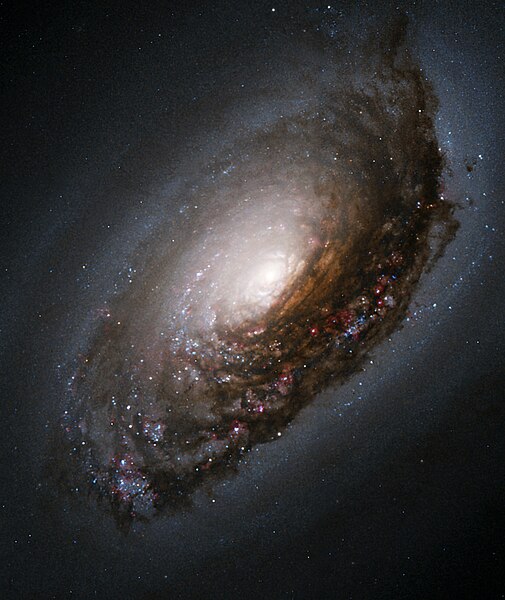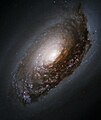Bild:Blackeyegalaxy.jpg

Grött vun disse Vörschuu: 505 × 600 Pixels. Anner Oplösungen: 202 × 240 Pixels | 404 × 480 Pixels | 897 × 1.065 Pixels.
Originaldatei (897 × 1.065 Pixel, Grött: 774 KB, MIME-Typ: image/jpeg)
Datei-Historie
Klick op de Tiet, dat du de Datei ankieken kannst, so as se do utseeg.
| Datum/Tiet | Duumnagelbild | Grött | Bruker | Kommentoor | |
|---|---|---|---|---|---|
| aktuell | 11:46, 2. Jun. 2005 |  | 897 × 1.065 (774 KB) | CWitte | This image of M64 was taken with Hubble's Wide Field Planetary Camera 2 (WFPC2). The color image is a composite prepared by the Hubble Heritage Team from pictures taken through four different color filters. These filters isolate blue and near-infrared lig |
Dateibruuk
Disse Sied bruukt dit Bild:
Allmeen Datei-Bruuk
Disse annern Wikis bruukt disse Datei:
- Bruuk op af.wikipedia.org
- Bruuk op ar.wikipedia.org
- Bruuk op ast.wikipedia.org
- Bruuk op az.wikipedia.org
- Bruuk op be.wikipedia.org
- Bruuk op bg.wikipedia.org
- Bruuk op bn.wikipedia.org
- Bruuk op br.wikipedia.org
- Bruuk op bs.wikipedia.org
- Bruuk op ca.wikipedia.org
- Bruuk op ce.wikipedia.org
- Bruuk op ckb.wikipedia.org
- Bruuk op co.wikipedia.org
- Bruuk op cs.wikipedia.org
- Bruuk op cy.wikipedia.org
- Bruuk op de.wikipedia.org
- Bruuk op diq.wikipedia.org
- Bruuk op el.wikipedia.org
- Bruuk op en.wikipedia.org
- Messier object
- Coma Berenices
- List of galaxies
- Portal:Astronomy/Picture/May 2005
- Portal:Astronomy/Picture/12 May 2005
- Portal:Astronomy/Picture/Week 48 2005
- User:ComaDivine
- User:Superfo
- User:Gilgamesh~enwiki/Favorite images
- List of spiral galaxies
- Portal:Solar System
- Portal:Solar System/WikiProjects
- User:Passargea/Favourite pictures/Space
- User:Logos/Hall of Galaxies
- User talk:Example/Archives/2008/April
- User:Mike YuHong Chen
- User:Stefania.deluca/sandbox
Kiek na mehr almeen Bruuk von disse Datei.

